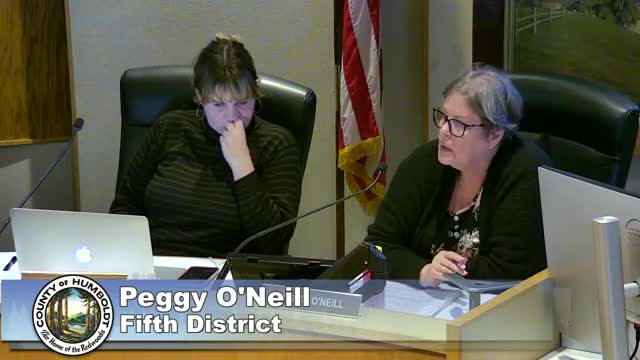Housing Ordinance Sparks Heated Debate Over Parking Requirements
July 19, 2024 | Humboldt County, California

This article was created by AI summarizing key points discussed. AI makes mistakes, so for full details and context, please refer to the video of the full meeting. Please report any errors so we can fix them. Report an error »

During a recent government meeting, officials engaged in a robust discussion regarding housing ordinances and parking requirements, particularly focusing on the balance between accommodating temporary housing needs and ensuring adequate parking for residents.
One key point raised was the necessity to provide housing options for individuals at risk of homelessness, including those living in cars or makeshift shelters. Officials expressed a desire to create ordinances that would support both temporary housing for healthcare workers and long-term solutions for vulnerable populations.
The conversation then shifted to the proposed parking alternatives, specifically Alternative 4, which suggested reducing parking requirements to one space for every two units. Some officials supported this approach, arguing it would allow developers flexibility and potentially encourage more sustainable living arrangements. However, others voiced concerns that such a reduction could exacerbate parking shortages in already congested areas, particularly in commercial zones where businesses rely on accessible parking for customers.
The debate highlighted differing perspectives on the necessity of parking in new developments. While some officials emphasized the importance of maintaining a higher parking standard to support community needs, others advocated for a more progressive approach that prioritizes bike storage and multimodal transportation options. The latter group argued that incentivizing bike parking could lead to a more environmentally friendly community, although concerns were raised about the practicality and security of outdoor bike storage.
As the meeting progressed, officials acknowledged the need for a balanced approach that considers both parking requirements and the promotion of alternative transportation methods. The discussion underscored the complexities of urban planning and the challenges of meeting diverse community needs while fostering sustainable development.
The meeting concluded with a call for further deliberation on the proposed ordinances, emphasizing the importance of finding a solution that addresses both housing and transportation concerns effectively. A brief recess was called to allow officials to regroup and refocus on the ongoing discussions.
One key point raised was the necessity to provide housing options for individuals at risk of homelessness, including those living in cars or makeshift shelters. Officials expressed a desire to create ordinances that would support both temporary housing for healthcare workers and long-term solutions for vulnerable populations.
The conversation then shifted to the proposed parking alternatives, specifically Alternative 4, which suggested reducing parking requirements to one space for every two units. Some officials supported this approach, arguing it would allow developers flexibility and potentially encourage more sustainable living arrangements. However, others voiced concerns that such a reduction could exacerbate parking shortages in already congested areas, particularly in commercial zones where businesses rely on accessible parking for customers.
The debate highlighted differing perspectives on the necessity of parking in new developments. While some officials emphasized the importance of maintaining a higher parking standard to support community needs, others advocated for a more progressive approach that prioritizes bike storage and multimodal transportation options. The latter group argued that incentivizing bike parking could lead to a more environmentally friendly community, although concerns were raised about the practicality and security of outdoor bike storage.
As the meeting progressed, officials acknowledged the need for a balanced approach that considers both parking requirements and the promotion of alternative transportation methods. The discussion underscored the complexities of urban planning and the challenges of meeting diverse community needs while fostering sustainable development.
The meeting concluded with a call for further deliberation on the proposed ordinances, emphasizing the importance of finding a solution that addresses both housing and transportation concerns effectively. A brief recess was called to allow officials to regroup and refocus on the ongoing discussions.
View full meeting
This article is based on a recent meeting—watch the full video and explore the complete transcript for deeper insights into the discussion.
View full meeting
